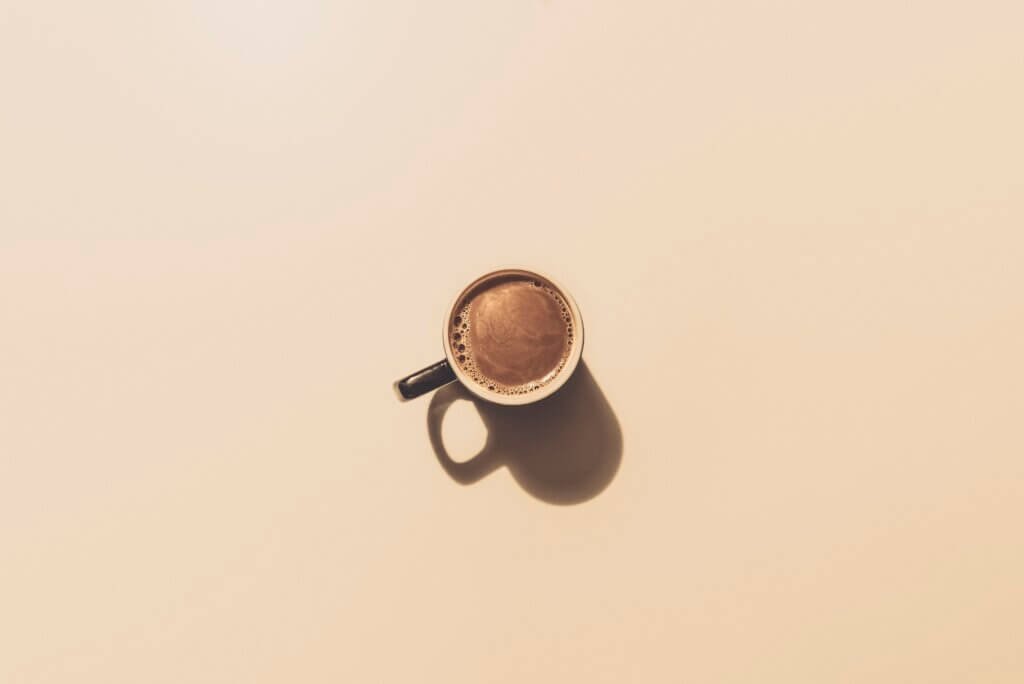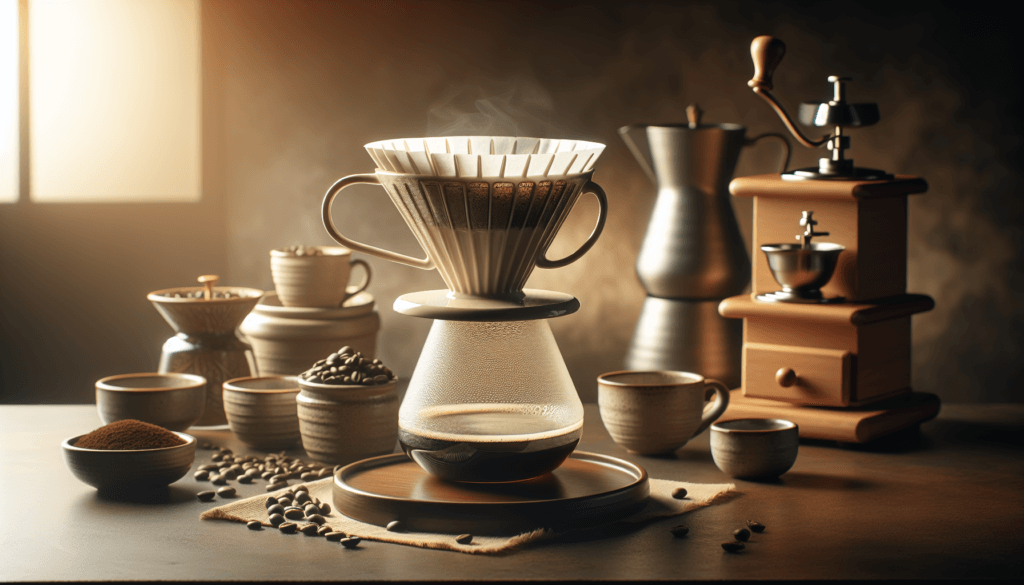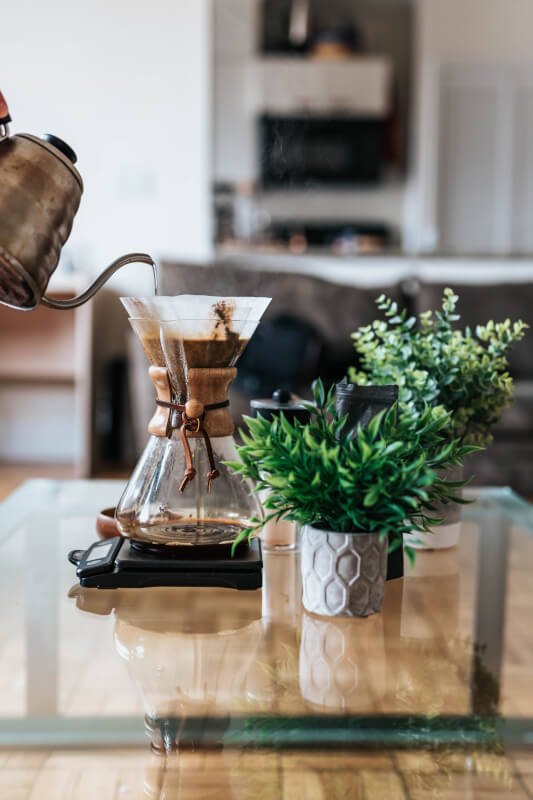If you’ve ever wondered how to brew the perfect cup of drip coffee, look no further! In this article, you’ll discover a range of techniques that will enhance your coffee brewing experience. From selecting the right coffee grind size to understanding water temperature and timing, we’ll walk you through the step-by-step process to achieve a rich and flavorful cup of drip coffee that will leave you craving for more. So grab your favorite mug and get ready to elevate your morning routine with these expert drip coffee brewing techniques.
Drip Coffee Brewing Techniques
If you’re a coffee lover looking to up your brewing game, mastering the art of drip coffee is a must. Drip coffee, also known as pour-over coffee, is a method that allows you to extract the full flavor potential from your coffee beans. With a few simple techniques, you can achieve a delicious cup of coffee that surpasses anything you can find at your local coffee shop. In this article, we’ll dive into the step-by-step process of drip coffee brewing and explore the key factors that contribute to a perfect cup. From choosing the right coffee beans to maintaining your equipment, we’ve got you covered!

Choosing the Right Coffee Beans
Before diving into the brewing process, it’s essential to start with high-quality coffee beans. The flavor and aroma of your coffee depend largely on the beans you select, so it’s crucial to choose wisely.
Selecting the Ideal Roast
Coffee beans come in various roast levels, from light to dark. The ideal roast level is a matter of personal preference, but each roast offers different flavor profiles. Lighter roasts generally have brighter acidity and more pronounced fruit notes, while darker roasts tend to be smokier and more robust. Experiment with different roast levels to discover your favorite flavor profile.
Considering the Bean Variety
Different coffee bean varieties, such as Arabica and Robusta, offer different flavor characteristics. Arabica beans are known for their delicate flavors, while Robusta beans have a stronger and harsher taste. Experiment with different bean varieties to explore the unique flavors they offer and find your preference.
Understanding Flavor Notes
Coffee beans often have specific flavor notes that can range from fruity and floral to chocolatey and nutty. Pay attention to the flavor descriptions provided by the coffee roaster. This information can help guide you in selecting beans that align with your taste preferences.
Freshness and Quality
When selecting coffee beans, opt for freshly roasted beans rather than ones that have been sitting on the shelf for months. Freshness is key to capturing the finest flavors in your cup. Look for beans with a roasted-on date or a “best by” date to ensure you’re getting the freshest product possible. Additionally, choose reputable coffee brands or local roasters known for their commitment to quality.
Grinding the Beans
Once you’ve chosen the right coffee beans, it’s time to grind them to perfection. Grinding your beans just before brewing ensures maximum freshness and flavor extraction.
Grinder Selection
Investing in a good quality coffee grinder is essential for achieving a consistent grind size. Blade grinders can be inexpensive but often result in uneven grounds. Burr grinders, on the other hand, offer more control over the grind size and produce a more uniform result. Consider your budget and brewing needs when selecting a grinder.
Choosing the Right Grind Size
The grind size you choose will depend on the brewing method you’re using. For drip coffee, a medium grind is generally recommended. The grounds should have a texture similar to granulated sugar. Experiment with different grind sizes to find the one that produces the best flavor extraction for your taste preference.
Avoiding Overgrinding
It’s crucial not to overgrind your coffee beans, as this can result in an over-extracted and bitter cup of coffee. Grind only the amount of coffee you need for immediate use and avoid storing pre-ground coffee for extended periods, as it quickly loses freshness and flavor.

Measuring the Coffee
Accurately measuring your coffee is crucial for achieving a consistent and balanced brew. Measuring by weight with a kitchen scale is the most precise method.
Using a Kitchen Scale
Investing in a kitchen scale is highly recommended for any coffee enthusiast. By weighing your coffee, you can ensure you’re using the correct amount for your desired brew strength.
Understanding Coffee-to-Water Ratio
The coffee-to-water ratio refers to the amount of coffee used in relation to the amount of water. A commonly recommended ratio for drip coffee is 1:17, which means using one part coffee to seventeen parts water. However, personal preference plays a significant role in determining the ratio that produces the desired taste and strength. Experiment with different ratios until you find your perfect balance.
Adjusting for Personal Preference
If you find your coffee too weak or too strong, don’t be afraid to adjust the coffee-to-water ratio accordingly. Increasing the amount of coffee will result in a stronger brew, while decreasing it will yield a milder cup. The beauty of drip coffee brewing is that it allows you to tailor the experience to your specific taste preferences.
Water Temperature
Water temperature plays a crucial role in coffee extraction. The ideal water temperature range for drip coffee brewing is between 195°F and 205°F (90°C and 96°C).
Ideal Water Temperature Range
Water that is too hot can scorch the coffee, resulting in a bitter taste. On the other hand, water that is too cold may not extract enough flavor from the beans. Aim to bring your water to a boil and let it cool for about 30 seconds before pouring it onto the coffee grounds. This will bring it within the optimal temperature range for extraction.
Avoiding Boiling Water
Avoid using boiling water directly on the coffee grounds, as it can lead to over-extraction and bitterness. Allowing the water to cool slightly ensures a more balanced and flavorful cup of coffee.

Water-to-Coffee Ratio
The water-to-coffee ratio is another critical aspect of drip coffee brewing that affects the final flavor of your brew.
Determining the Optimal Ratio
The ideal water-to-coffee ratio is subjective and will depend on personal preference. As a starting point, the 1:17 ratio mentioned earlier is a good guideline. However, feel free to experiment with different ratios to find the one that suits your taste best.
Adjusting Strength and Flavor
If you prefer a stronger brew, consider using a higher coffee-to-water ratio. Conversely, if you prefer a milder cup, you can increase the amount of water used. Fine-tuning the water-to-coffee ratio allows you to tailor the strength and flavor of your coffee to perfection.
Preparing the Filter
Choosing the right filter and preparing it properly are essential for a clean and flavorful cup of drip coffee.
Selecting the Right Filter Type
Drip coffee filters come in different materials, including paper, metal, and cloth. Paper filters are the most common and offer a clean and sediment-free cup. When choosing paper filters, make sure they are of high quality to avoid any undesirable flavors.
Rinsing the Filter
Before adding coffee grounds, it is recommended to rinse the paper filter with hot water. This helps remove any paper taste and preheats the brewer, promoting more even extraction.
Removing Paper Taste
Rinsing the filter is particularly crucial with paper filters, as it eliminates any residual paper taste that can find its way into your final cup. This simple step can make a significant difference in the overall flavor of your coffee.

Pre-wetting the Coffee
Pre-wetting the coffee grounds is a crucial step that allows for better extraction and a more flavorful brew.
Pre-wetting Purpose
Pre-wetting, also known as blooming, involves pouring a small amount of water over the coffee grounds to initiate the brewing process. This step allows the coffee to release gases trapped inside the beans, ensuring a more even extraction.
Evenly Wetting the Grounds
When pre-wetting, pour just enough water to saturate all the grounds and allow them to bloom. Start from the center and gradually move in a circular motion to ensure even distribution. After a short pause, you can proceed with the rest of the brewing process.
Allowing Off-Gassing
Pre-wetting the coffee also allows for off-gassing, where carbon dioxide escapes from the beans. This process helps prevent channeling and allows for more even water distribution throughout the coffee bed.
Pouring Technique
Mastering the art of pouring is a crucial element of drip coffee brewing that affects both extraction and flavor.
Controlling Water Flow
When pouring water onto the coffee grounds, maintain a steady and controlled flow. Avoid pouring too fast, as it can lead to uneven extraction and potential channeling. Aim for a slow and steady pour that evenly saturates the coffee bed.
Achieving Proper Extraction
The goal of pouring technique is to achieve proper extraction, where hot water meets coffee grounds and extracts soluble compounds. By pouring in a circular motion, you can ensure all the grounds receive an equal amount of water, resulting in a well-balanced and flavorful cup.
Avoiding Channeling
Channeling is the occurrence of water finding a path of least resistance through the coffee bed, leading to uneven extraction. To avoid this, pour slowly and gently in a spiral motion, gradually moving from the center to the outer edges. Taking your time will promote an even and consistent extraction.
Brewing Time
The brewing time for drip coffee depends on various factors, including grind size, water flow rate, and personal preference.
Finding the Optimal Brewing Time
For a medium grind size and the recommended water-to-coffee ratio, the optimal brewing time is typically around 3-4 minutes. This allows for sufficient extraction without over-extracting the coffee, resulting in a well-balanced brew. However, feel free to adjust the brewing time depending on the taste profile you desire.
Experimenting with Brew Time
If you prefer a stronger cup, you can extend the brewing time slightly. For a milder cup, you can reduce the brewing time. Keep in mind that altering the brewing time can affect the extraction and overall flavor of your coffee, so experimentation is key.
Maintaining Equipment
Properly maintaining your brewing equipment ensures optimal performance and longevity. Here are a few key aspects to consider:
Cleaning the Coffee Maker
Regularly cleaning your coffee maker is essential for removing any buildup of oils and residues that can alter the taste of your coffee. Consult the manufacturer’s instructions for the best cleaning methods specific to your machine.
Regular Descaling
Over time, mineral deposits can accumulate inside your coffee maker, affecting its performance and the taste of your brew. Descaling is the process of removing these deposits. Consult the manufacturer’s instructions for recommended descaling methods and frequency.
Replacing Worn Parts
If you notice any worn or damaged parts in your coffee maker, such as filters or gaskets, it’s important to replace them promptly. A properly functioning machine ensures consistent brewing results and a better overall coffee experience.
By following these drip coffee brewing techniques, you can elevate your coffee brewing skills and enjoy a superior cup of coffee right in the comfort of your own home. From choosing the right coffee beans to perfecting your pouring technique, each step plays a crucial role in crafting a delicious and satisfying brew. So grab your favorite beans, fire up your coffee maker, and get ready to savor every sip of your perfectly brewed drip coffee!


